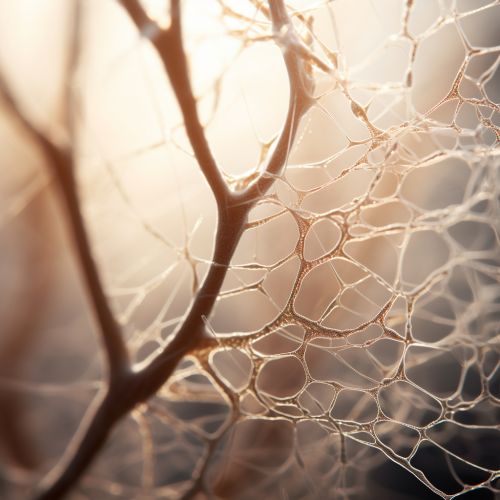Hyphae
Introduction
Hyphae are the long, branching filamentous structures of fungi, which together make up the mycelium, the main vegetative part of a fungus. They are a key component in the morphology and growth of fungi, playing a crucial role in the absorption of nutrients and reproduction.
Morphology
Hyphae are typically tubular, filamentous structures that range in diameter from 2 to 10 micrometers. They are composed of a tubular wall surrounding the intracellular material, which includes the nucleus and other organelles. The hyphal wall is primarily composed of chitinous polymers, along with other polysaccharides, proteins, and lipids.


Growth
Hyphae grow at their tips, where a structure called the Spitzenkörper is located. This structure, also known as the "tip body", orchestrates the synthesis and assembly of cell wall materials, allowing the hypha to extend and branch out. The growth of hyphae is influenced by environmental factors such as temperature, humidity, and the availability of nutrients.
Function
Hyphae serve several functions in the life cycle of a fungus. They are primarily involved in the absorption of nutrients from the environment, due to their large surface area to volume ratio. They also play a role in the reproduction of fungi, forming structures such as spores and fruiting bodies. Moreover, hyphae can penetrate substrates, allowing the fungus to colonize various environments.
Types of Hyphae
There are several types of hyphae, distinguished by their structure and function. Septate hyphae are divided into compartments by cross-walls known as septa. Coenocytic hyphae, on the other hand, lack these septa and appear as long, continuous cells. Rhizoids are specialized hyphae that anchor the fungus to the substrate and absorb nutrients. Stolons are horizontal hyphae that connect groups of hyphae together.
Hyphae in Mycorrhizal Associations
Hyphae play a critical role in mycorrhizal associations, symbiotic relationships between fungi and plants. The hyphae form a network around or within the plant roots, facilitating the exchange of nutrients between the fungus and the plant. This relationship is crucial for the survival and growth of many plant species.
Hyphae in Human Disease
Certain pathogenic fungi produce hyphae that can invade human tissues, leading to various fungal diseases. For example, the fungus Candida albicans forms hyphae that can penetrate the mucosal surfaces of the human body, causing infections such as oral thrush and vaginal yeast infections.
